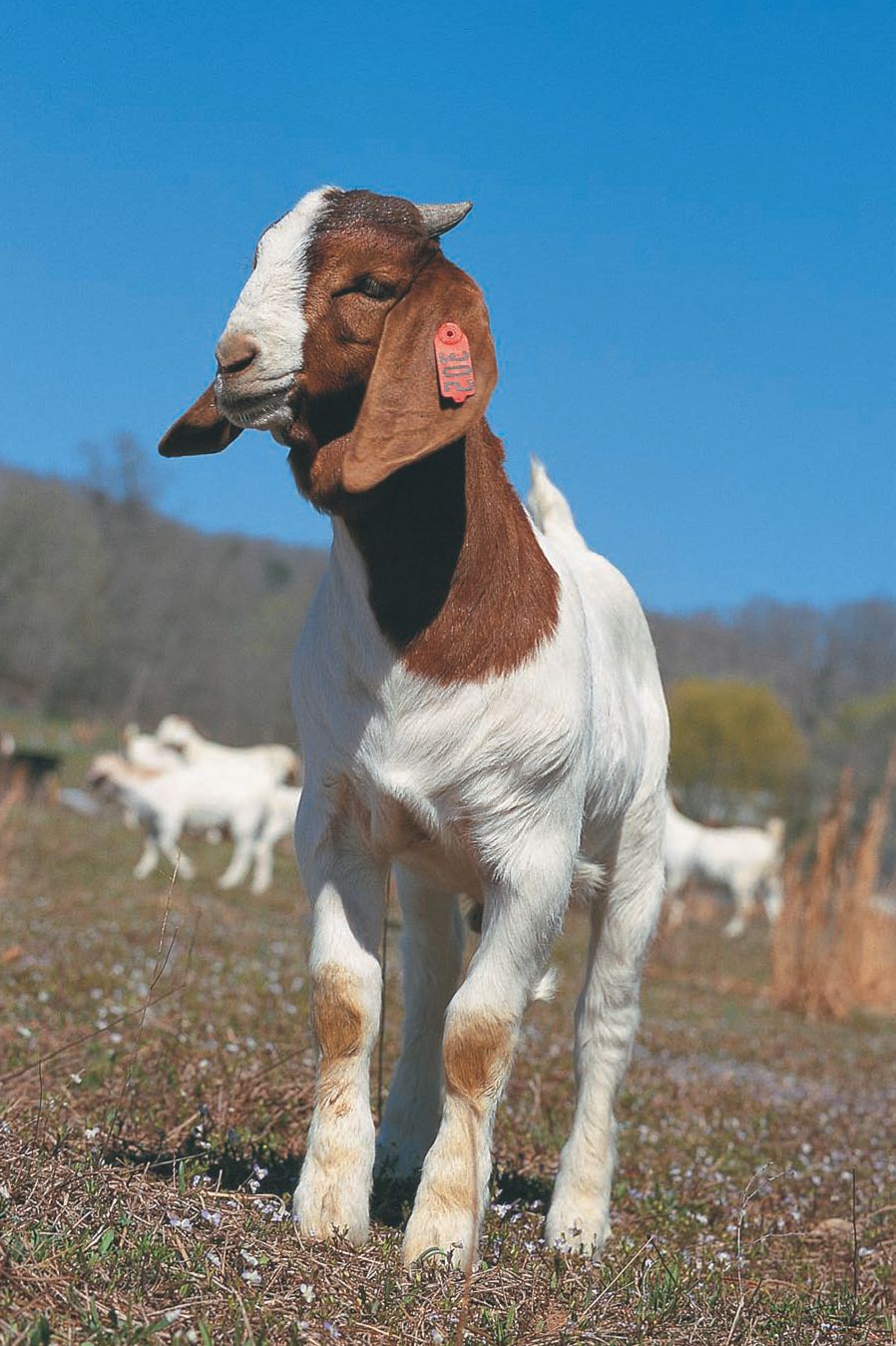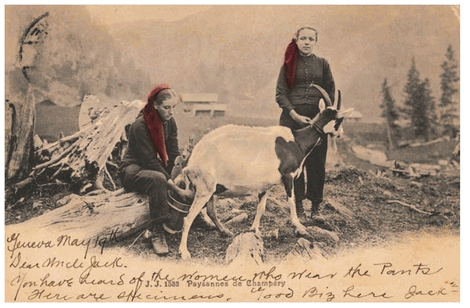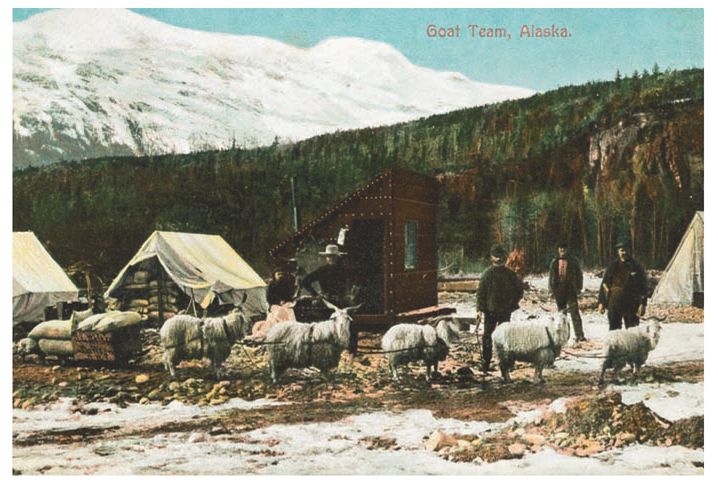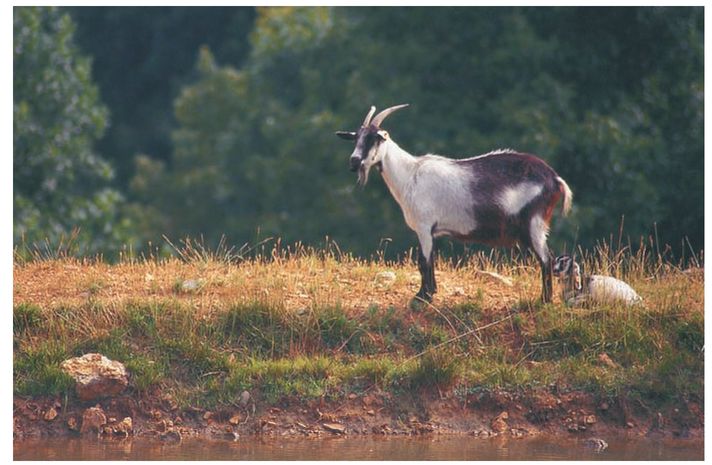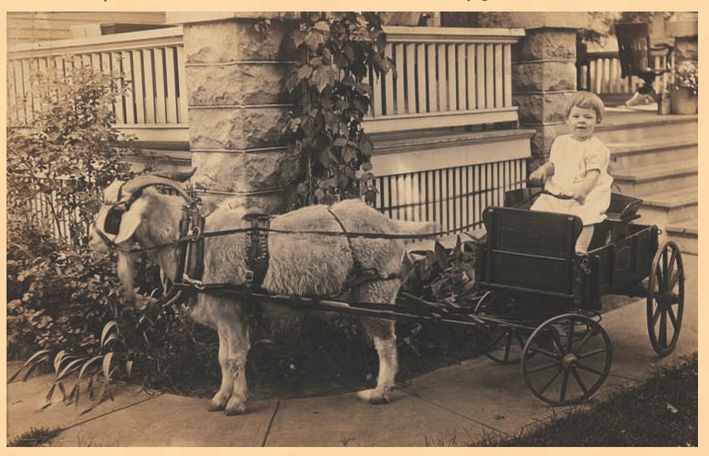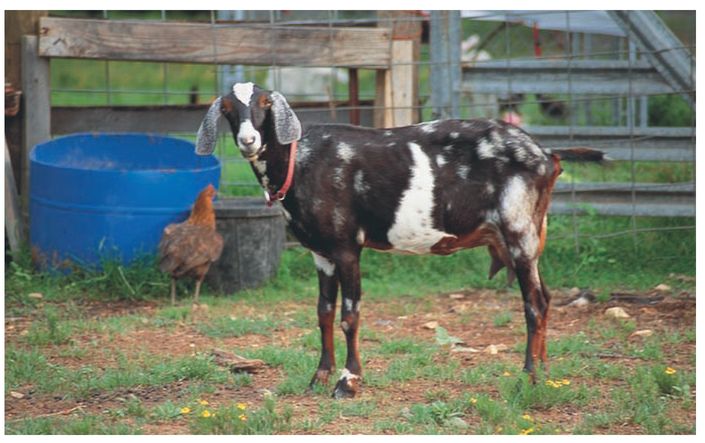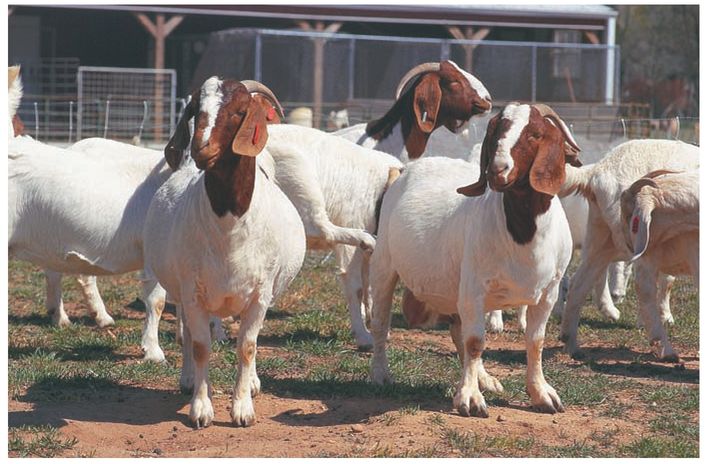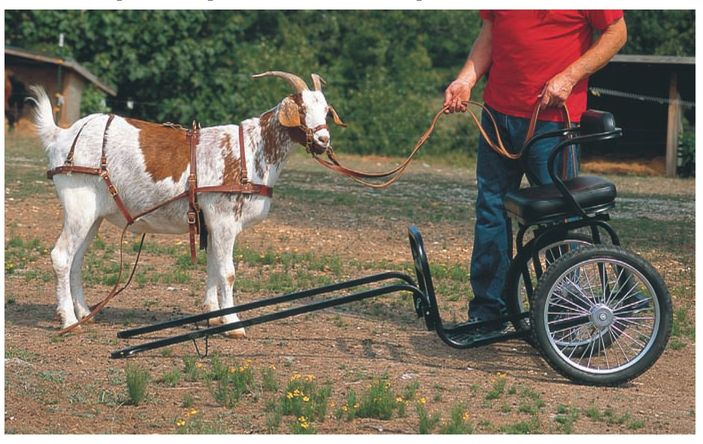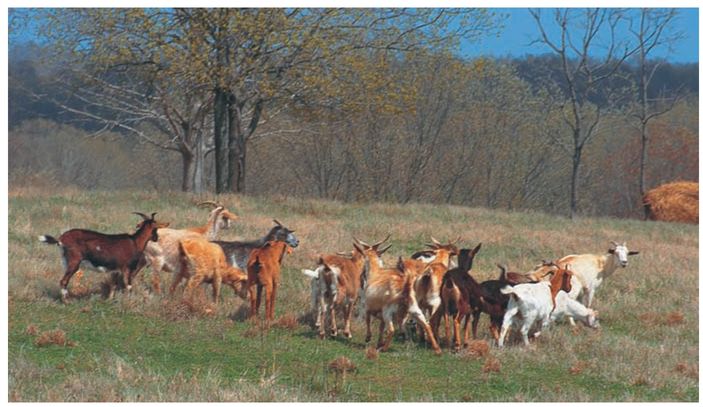CHAPTER ONE
Goats: A Primer
How long have goats been around? Where did the first ones come from? Are there many different kinds? What are they like? Who raises goats? Before getting into choosing, purchasing, housing, breeding, and other essential subjects, here’s a brief look at goats through history and a glance at types, breeds, and traits.
FROM THE BEGINNING
Goats were domesticated around 8000 BC by the people of Ganj Dareh, a Neolithic village nestled in the Kermanshah Valley of the Zagros Mountains in the highlands of western Iran. According to archaeologists, goat meat had graced the human menu for more than forty thousand years prior to this. The earlier bones gathered from area caves, however, were discards from mature bucks (male goats), the favorites of hunters who needed to bag something big enough to feed a crowd. Toe bones recovered from Ganj Dareh middens are the remains of young bucks, the ones not needed for breeding purposes, and some aged does, females too old to have kids. The change tells us that people had begun keeping goats, rather than just hunting them.
After a one hundred to two hundred–year occupation, the good people of Ganj Dareh packed up their families and possessions, including their goats, and traveled south into the arid Irani lowlands. They resettled away from the wild goat’s natural range at a place called Ali Kosh. With a movable food supply—goats and two newly domesticated cereal grains, wheat and barley—humans could abandon their long-time roles as hunter-gatherers and take up the mantle of nomadic herders and tillers of the soil. Archaeological excavations at Jericho unearthed mounds of domestic goat bones carbon-dated to 7000–6000 BC.
Early domestic goats served their human masters exceedingly well. They provided a portable and readily accessible milk and meat supply, fiber for tent covers and clothing, skins for leather, hair-on pelts for robes and rugs, and kids to sacrifice to the gods. Goats packed belongings on their backs and drew travois-type sledges. They were friendly and small, thus easily handled, and required minimal care. Best in arid, semitropical, and mountainous countries, goats survived on browse from trees, brush, and scrub, under conditions in which horses, sheep, or cattle would starve.
Goats spread east from the Fertile Crescent across continental Europe and thence to Great Britain. As elsewhere, goats there became “the poor man’s cow,” thriving in mountain and moorland crofters’ fields and folds, from which they sometimes escaped. Their feral descendants still thrive in remote and isolated pockets along the west coast of Ireland, on Snowdonia in Wales, on Lundy Island and the Isle of Rum, in the Mull of Kintyre, Galloway, and Loch Lomond in Scotland.
During the 1500s, goats came to the Americas with Spanish conquistadors, settlers, and sailors. The Spaniards, like other seafarers of the day, carried aboard their sailing ships this tasty, animated meat supply. It was their custom to salt uninhabited islands with breeding stock, allowing them to harvest future meals on subsequent trips. Historians believe the Pilgrims carried goats on the Mayflower’s 1620 maiden journey to the New World. Plymouth Colony certainly had them by 1627, when a resident praised the settlement’s goats because “they yeeld commodities with their Flesh, their Milk, their Cheese, the Skinnes, and the Hayre.” The Pilgrims considered goat’s milk a restorative medicine as well. In the coming centuries, goats accompanied settlers as they pushed westward across North America. By browsing as the party traveled, goats furnished their own eats while providing meat and milk on demand.
Domestic goats were a ready source of milk and meat for early settlers.
By the mid-nineteenth century, generic Spanish goats (also called scrub, brush, hill, briar, and woods goats) could be found in most southeastern states and throughout the Southwest and California. The year 1849 saw the arrival of North America’s first purebred goats: seven Angora does and two bucks imported to South Carolina. (Fleecebearing goats were commonplace in parts of Asia Minor as early as 600 BC.) One of North America’s few purely native breeds first made an appearance in the 1880s. An itinerant stranger named John Tinsley came to Marshall County, Tennessee, accompanied by four slightly peculiar goats. When they were startled, their muscles would seize, causing the animals to freeze and sometimes fall over. From these four goats, many believe, emerged the Myotonic goat, a heavy rump breed—with a tendency to topple—popular for meat production and ease of handling.
The 1904 World’s Fair in St. Louis, Missouri, heralded a further turning point in goat history when it sponsored the first North American dairy goat show. The Missouri Historical Review noted, “This first provision made at a World’s Fair for a display of milch goats brought to the Exposition some choice and home bred specimens.” At the same World’s Fair, Hagenbeck’s Wild Animal Paradise imported two striking Schwartzwald Alpine does and displayed them in a lavish diorama depicting the Alps. This same year the United States formed its first goat registry, the American Milk Goat Record, now the American Dairy Goat Association (ADGA).
A team of goats stands ready to transport supplies across Alaska in earlier days. As a source of strength and fiber as well as food, the goat played an important role in the settlement of the United States and Canada.
This horned, cou blanc–colored (French, “white neck”) French Alpine doe is typical of her breed.
In 1906, Mrs. Edward Roby crossed Swiss dairy goats with common stock to develop the American Goat. With them, she strove to supply tuberculosis-free milk to the children of Chicago at a time when many cows were infected. Although she was moderately successful, parents who had never tasted goats’ milk refused to give it to their children. During the early 1900s, the first Anglo-Nubians (now simply called Nubians) were shipped from Britain to North America. Between 1893 and 1941, 190 Toggenburg dairy goats were imported; between 1904 and 1922, 160 Saanen. During 1922, the first documented purebred French Alpines, twenty-one in a single importation, arrived by ship, followed in 1936 by five Oberhasli (then called Swiss Alpines). The first documented modern Pygmy goats arrived in North America during the 1950s, originally as novelties to be displayed in zoos. In 1993, the first purebred Boer meat goats, developed in South Africa in the early 1900s, set foot (or hoof) on American soil. Boers took America by storm, as did Kiko meat goats developed in New Zealand and imported at about the same time.
Classic Goats
In Words and Images
Goats are mentioned many hundreds of times in sacred books such as the Bible, the Torah, the Koran, and the Bhagavad Gita, often in the guise of sacrifices and as tribute. Goats are pictured on the walls of the oldest known Egyptian tombs and on coins of many ancient realms. A child’s toy goat is one of the finest artifacts excavated at India’s Harappa ruins, dating to 3000–1500 BC. In 1184 BC, Homer described wonderful goat and sheep milk cheeses—among them forerunners of today’s feta—aged in mountain caves in what is now Greece.
Goats were so important to ancient man that some of his deities, spirits, and fairies were assigned goatlike features. Gods Dionysus, Pan, and Silenus had horns and hooves. Fairies and other spirits with goaty features include Greek satyr, Italian faun, Russian ljeschie, Polish polevik, Basque lamiñak, Welsh gwyllion, and the Scottish glastig and urisk. Hindu deities Agni and Kali both rode goats, as did Aphrodite (Greece), Befana (Italy), and Joulupukki (Finland).
Named goats figure in Norse eddas and mythology. The great doe Heidrun gives mead, not milk, for the gods and heroes in Valhalla. Thor’s chariot team, Tanngrisnir and Tanngnostr, who pulled his chariot across the sky, could be slaughtered for supper at day’s end, then restored overnight. They were ready to head out again at daybreak—a neat trick even for hardy goats!
GOATS AT A GLANCE
Domestic goats belong to the Bovidae family, along with other hollow-horned, cloven-hoofed ruminants such as cattle, thence to the Caprinae subfamily, in the company of their cousins, the sheep. Goats are further classified by their genus, Capra, and fall into one of six species: Capra hircus (today’s domestic goat), Capra aegagrus (the wild Bezoar goat, ancestor of Capra hircus), Capra ibex (the wild ibex), Capra falconeri (the markhor of central Asia), Capra pyrenaica (the wild Spanish goat of the Pyrenees), and Capra cylindricornis (the Dagestan tur of the Caucasus mountains). (Some scientists divide goats into as many as ten species.)
Roughly one hundred breeds and documented varieties of domestic goats exist in the world today, but fewer than two dozen are available in North America. The world’s estimated 768 million goats have many traits in common, including social structure, flocking instincts, and breeding traits.
GOAT CLASSIFICATIONS
For the goat keeper, goats fall into three basic categories—dairy goats, meat goats, and goats raised for fiber. Subcategories and crossovers certainly exist. Goats are sometimes used to pull carts and pack supplies recreationally and to clear land.
Dairy Goats
Dairy goats are lithe, elegant creatures developed for giving lots of luscious milk. However, excess kids (bucklings not needed for breeding) are often marketed as cabrito (the meat of young kids). Some dairies routinely breed their does to Boer and Kiko bucks to produce a meatier product. Recreational goat aficionados claim dairy goat wethers, particularly Saanens and Alpines, make the best harness and pack goats bar none.
Nubians (called Anglo-Nubians in their native Britain) give less milk than the Swiss dairy breeds produce, but their milk is higher in butterfat. Nubians come in a wide range of colors, and this girl’s a knockout with her spotted pattern!
Dairy breeds readily available throughout North America include the Swiss breeds (Saanens, Sables, Oberhaslis, Toggenburgs, and Alpines), the LaMancha (a distinctly American breed), the Nubian (known in its British homeland as the Anglo-Nubian), and the pint-size Nigerian Dwarf from West Africa. Scaled-down miniature versions of all but Nigerian Dwarfs are out there, too.
An uncommon midsize combination dairy and meat breed, the Kinder goat, was developed by crossing full-size Nubian does with meaty Pygmy bucks. Although Pygmy goats are primarily raised for pets, the does give a surprising volume of high butterfat-content milk.
Meat Goats
Primary purebred meat goat breeds are the immensely popular Boer from South Africa; all-American Myotonics (also known as fainting goats) and their selectively improved counterparts, Tennessee Meat Goats; and the New Zealand Kiko goat. Several exciting combination breeds such as the TexMaster (Boer/Tennessee Meat Goat) and GeneMaster (Boer/Kiko) are being developed, while generic Spanish meat goats form the nucleus of many commercial herds. All are bred for muscle mass, hardiness, adaptability, and exceptional feed-to-flesh conversion ratio. Pygmies are meat goats, too.
Fiber Goats
The backbone of North America’s fiber goat industry is the traditional white mohair–producing Angora goat, but the fleece of scarcer-colored Angoras is in high demand for hand spinning, too. A more diminutive fiber producer is the midsize Pygora goat, developed by crossing Angoras and Pygmies. Cashmere goats are the Rolls-Royces of the fiber goat industry, and while uncommon, the American cashmere goat population is growing rapidly.
These muscular MAC Goat full-blood does are shining examples of their breed. Boer goats revolutionized the meat goat industry.
Recreational Goats
Goats have frequently been driven in harness, sometimes as serious work animals but frequently for recreation. Shortly after their father’s presidential inauguration in 1861, Willie and Tad Lincoln were presented with cart goats named Nanny and Nanko. On one occasion, Tad harnessed Nanko to a rocking chair and drove at breakneck speed through a White House reception, causing many a dignified gent and hoopskirted lady to leap to safety. Most recreational goat buffs prefer wethers, but does, too, can work in harness or under packing gear. A bonus: a lactating pack doe provides fresh, whole milk on the trail. Recreational goat equipment—pack saddles and panniers, carts and driving harnesses—is readily available for goats of all sizes.
Brush Goats
Because goats willingly browse weeds and saplings other animals won’t touch—and nourish themselves in the bargain—many people keep them for clearing land of scrub and brush. Dairy does can do the job, but because of potential damage to their large udders, goat keepers prefer not to use them for this particular task. Improved meat goats do well but will usually require supplementary feed. The hands-down champions are hardy generic Spanish goats. They aren’t called brush, scrub, and briar goats for nothing.
Eamon, wearing a custom-crafted leather harness, stands ready for cart-pulling duty.
This goat herd moves out under the leadership of the herd queen.
SOCIAL STRUCTURE
Goats maintained under herd conditions are protected by a single large, strong alpha buck whose role is to breed his choice of does, to maintain discipline, and to guard the group from predators. When the herd moves, members proceed, usually single file. In times of perceived danger the alpha buck protects the rear.
Though other intact males may be part of the herd’s hierarchy, these underlings are not permitted to sire offspring. Younger bucks periodically challenge the alpha buck’s position. When he’s usurped, removed from the herd, or killed through predation, the group readily accepts a new alpha buck.
Not so the herd’s true leader, a wise old alpha female, the herd queen. When she moves, all, including the alpha buck, follow. When she halts to browse, everyone eats. Once established, she is herd queen until she’s too infirm to do her job or dies. Confusion reigns until members select a new herd queen—often one of the former queen’s daughters.
Separating the Sheep from the Goats
• Unless she’s ill or frightened, a goat carries her tail up and flipped forward over her back; sheep’s tails invariably hang down.
• A goat’s horns sweep back from the skull, then upward and sometimes out; most sheep’s horns curl back, then down and around into spirals.
• Goats travel widely, gleaning 60 percent of their daily fare from trees and bushes, 40 percent from grass and herbs. Sheep tend to stay closer to home, ingesting 90 percent of daily fare through grazing grass and herbs.
• Goats are a lying-out species: does hide their newborns in the grass or brush as shelter from predators, returning five or six times a day to feed them. Newborn lambs shadow their dams within hours of birth.
Advice from the Farm
Welcome to the Goat World
The experts offer some words of wisdom to new goat keepers.
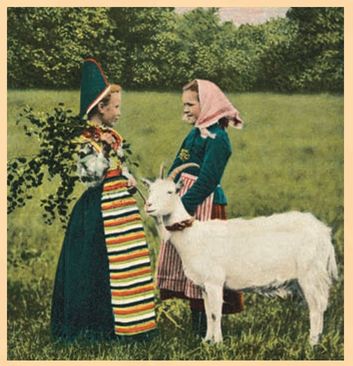
A Very Friendly Place “Goats are great, and you will find the goat world is a very friendly place. Figure out what you’re looking for in a goat, then find a breed (or mix) that best matches what you want. If you are looking for milkers, choosing older animals is wise as they have been milked a few years and are most likely pretty used to it. They will stand better for you, and you don’t have to train them. Have someone give you a milking lesson.
“If you are looking for any old goats, see if there is a rescue near you. Farm animal rescues can be hard to find, but they do get very nice goats that the old owners just couldn’t keep anymore. They also take in abused animals, so talk to the rescue to see which would be the best match for you.
“You can get meat goats as kids, you don’t need much training with them, but if you’re new to raising your own meat, you may get very attached and end up with pets.
“I have Nubians and Myotonic (fainting) goats and I love them both, though I think the fainters are my favorite. Myotonics are meat goats, but I have the small ‘pet’ size. I have never eaten one.
“Congrats on the new goats you will be getting! Remember that once you start, you will always make room for ‘just one more.’ ”
—Michelle Wilfong
A Lot of Work!
“Dairy goats are a lot of work when they’re lactating because they have to be milked twice a day if they’re not raising their own kids, and you can’t just milk a goat when you feel like it. It must be done on a regular schedule. I’ve had Nubian dairy goats, and while they’re my favorite breed, I just don’t have the time to milk.
“Angora and cashmere goats require shearing—twice a year in the case of the Angora—and then what do you with the fleeces? If you’re a hand spinner or if you want to market mohair or cashmere on a commercial basis, that’s good, but otherwise it’s a lot of work! You also need to be careful of the type of pasture you have for fiber goats because it’s very easy for them to pick up grass seeds and burrs that will downgrade the quality of their fiber.
“I have pasture-run meat goats of no specific breed. They’re relatively easy to take care of. These goats would make good pets if you don’t like the idea of selling your goats to the butcher or eating them yourself.”
—Glenda Plog
A typical day goes something like this: Come daybreak, the herd rises and sets out to browse, its two stalwart rulers in the lead. Herd queen spies a tasty stand of blackberry brambles. She stops to nibble leaves. The rest of the herd crowds around and feeds, too. Herd king eats but remains alert. When herd queen feels it’s time to move along, she gives herd king a long, hard look. When he notices, he heads out with his queen, and the herd follows. When it’s time to stop and digest, queen gives king another look. He leads them to a sheltered area where herd queen picks a cushy spot, and they all lie down and ruminate.
Older goats boss younger ones, big goats lord it over smaller peers. Horns account for a lot. A female goat with horns generally ranks higher than her hornless sisters, and alpha bucks with impressive horns are challenged less.
BREEDING TRAITS
Depending on breed and condition, bucks reach sexual maturity at three to ten months. Does require six months to a year. Because occasional precocious kids mature faster than the norm, goat keepers separate the sexes by twelve to fourteen weeks. One mature buck can impregnate as many as fifty does in a sixty-day breeding season.
Most goats breed seasonally from early fall through late winter, though breeds developed in hot climates, such as Boers and Kikos can cycle (come into heat or estrus) and conceive year-round. Goats cycle every eighteen to twentytwo days and remain receptive to the buck for twelve to thirty-six hours; ovulation generally occurs during the last hours of standing heat. Depending on age and breed, gestation ranges from 148 to 156 days and leads to the birth of one to four (or more) kids.
Biological Traits*
Rectal temperature: 101.5–104.5 degrees Fahrenheit
Pulse: 60–80 beats per minute*
Respiration: 12–25 breaths per minute*
Ruminal Movements:1–1.5 per minute
Blood Capacity: half to third of body weight
Natural Life Span: 10–12 years (wellmaintained goats have lived 20 years or more)
Sight: Goats have relatively poor depth perception but otherwise keen sight. They distinguish certain colors and unless fleece obstructs their vision, they take in a 280- to 320-degree visual field.
Taste: Goats distinguish between bitter, sweet, salty, and sour tastes. Their high tolerance for bitter flavors allows them to savor vegetation species that other ruminants won’t eat.
Hearing: Goats have very acute hearing, encompassing a full sound spectrum from high to very low pitch.
Teeth:Mature goats sport four pairs of incisors on the lower jaw (a hard structure call a dental palate or dental pad takes the place of upper incisors), plus three premolars and three molars on each side of the upper and lower jaws.
* parameters run slightly higher for kids
